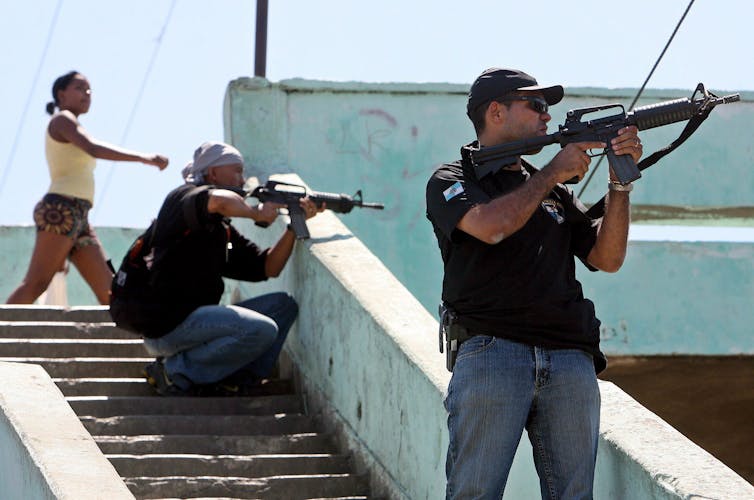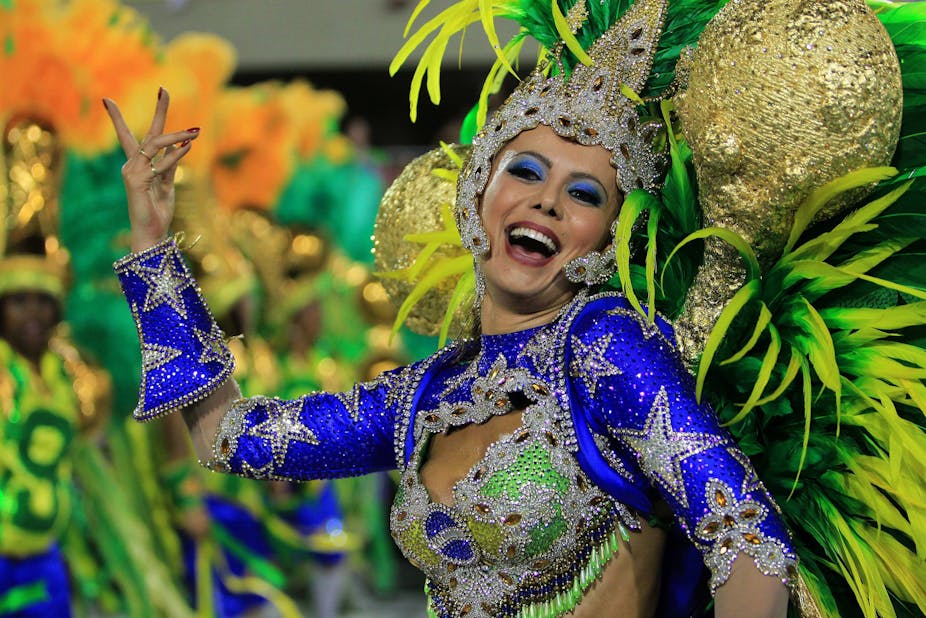The ABC has recently screened Michael Palin’s travel program “Brazil” but unfortunately, the show has been much more about the expected sex, samba, and soccer stereotypes than the complexities of the country.
This is the case even when the images he showed and his interviewees themselves hinted at the latter. Brazilians in these shows are always brown, never Asian (Brazil is the home of the largest Japanese community outside Japan, comprising around 1.5 million people), or blonde (the descendants of Germans, Polish, Jewish and other Eastern Europeans who started to settle Brazil in the 19th century), or just regular folks going about their daily business.
Of course, the tourist industry grew out of a colonial relationship between Europe and the rest of the world. In this process Europe defined itself as civilised (and superior) against the uncivilised, brown, exotic other. The mission of civilising the other justified the colonial enterprise.
It is still the case that exoticism sells. Yet, in the past decades many tourists from Asia and South America have travelled to the Metropole as well, and the tourist industry has painted Europe and the US as exotic places to visit, although this exoticism is based on the history and “high culture” of these places.
Michael Palin, like many other foreigners, is keen to interpret and understand the new economic powerhouse that Brazil has become as part of the BRIC countries (Brazil, Russia, India, China). But if old and tired stereotypes are all we get, is it worth producing the program and watching it?
For the many foreigners who will travel there for the World Cup in 2014 and the Olympic Games in 2016, these stereotypes will certainly be at the forefront of their imaginary on the country. However, brand-new TV programmes could play a part in painting a much more multifaceted and stimulating picture.
The second programme in the series, broadcast on November 18, is a good case in point. The program opened with Michael flying a helicopter over São Paulo city, a sprawling megalopolis of 20 million inhabitants. At the same time, his voice over announced that he would travel to the Amazon where indigenous people have “lived the same way for thousands of years”.

Anthropologists have argued that indigenous cultures, far from being timeless, also have their own histories; that they change in the same way as other societies and cultures change. Even when the images in the program contradict the myth of the “lost tribe in the middle of the Amazon” – there is a quick scene in which some indigenous people are riding bicycles and wearing T-shirts, and with a satellite dish on their traditional hut – that doesn’t warrant a change in Palin’s point of view. Both groups are filmed in traditional body decoration conducting a ritual.
Palin interviewed members of two indigenous groups which have been covered in news media in recent times. The Yanomami are celebrities in their own right, having been the subject of several anthropological studies, films, campaigns to protect their lands, and articles in the popular media.
In the past decade they were the centre of a massive controversy when investigative journalist Patrick Tierney accused James Neel, a world-famous human geneticist, of infecting the Yanomami with measles and creating an epidemic while conducting research. He also accused Napoleon Chagnon, a renowned anthropologist, of misrepresenting Yanomami society by painting them as extremely violent and of staging violence in order to make his film Yanomamö: The Fierce People a best seller.
Palin failed to ask them about this.
None of this augured well for the program on Rio. Would he show the naked women on the beach, the hot sexy Latinas/os and the “happy people” in the colourful favelas?
Surprisingly the first part of the program actually considered the ways in which a socio-economic apartheid is mapped onto the city: the rich live by the beach, while the poor live dangling from makeshift homes on the mountain sides, the so-called favelas.
He interviewed Vic Muniz, the internationally acclaimed Brazilian artist who has done a lot of work trying to improve the lives of the poor. He is featured in the documentary Wasteland, about Brazilians who live off one of the largest landfills in Latin America, in the periphery of Rio.
Muniz and others he interviewed talked about the pacification of the favelas, a process in which the state is taking back the favelas from the drug barons by supplying transport, health, and education to the people who live there.
Nevertheless, the second part of the program comprised of a string of silly interviews all trying to convey that Rio (and by extension Brazil) is a place in which there is no prejudice or strong sexual morals and everyone is happy and free from the demands of a life regulated by work.

The first interviewee was an American writer who has been living in Rio for decades and wrote a book called How to be a Carioca (as the inhabitants of Rio are called). Against a backdrop of pouring rain Palin asked her: “What do Cariocas do when it rains?” To which she answered: “Nothing, they just go home. They cancel their plans and wait for the sun to come out so that they can go to the beach.”
So what is this suggesting? The Cariocas are just made up of members of the indolent leisured classes? They have no jobs to go to? The simplification is staggering.
Things take a turn for the worse in the next scenes. He visits a love motel; interviews a black transvestite apparently to ask what the difference is between transsexuals and transvestites (surely a question he didn’t need to leave England and travel to Brazil to have answered).
The camera focuses on a billboard which carries Rio’s government campaign “Stop Homophobia”. Palin misses the opportunity to ask why the government decided to run this campaign, what the levels of homophobic crime in Rio are, if the interviewee was afraid of violence against her.
The next scene shows him at the Rio gay parade. He’s on board of the transvestites’ float. After a series of close up shots of boobs and bottoms, the camera closes in on him and pans out to the vast numbers of people in the parade. The program ends by him saying that he feel as lost as a new lamb in an abattoir. Meat, sex, debauchery.
So the producers of Michael Palin’s Brazil chose the popular and simple over the interesting and complex. By taking politics out of “culture”, Palin gives a very old hackneyed picture of Brazil.
Sex sells, it is true, but I can assure you that there is more to Brazil than that.

